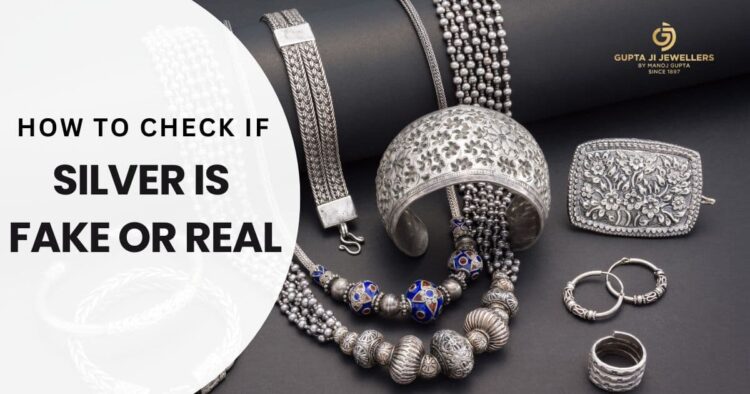One must navigate careful assessment steps before buying silver objects including jewelry pieces, utensils and financial investment items. Throughout centuries silver has mesmerized human beings through its dazzling appearance and unique attributes. Exactly because people value silver so highly it appears in numerous objects such as jewelry utensils and coins.
But how to tell if silver is real? Silver appeals to counterfeiters because of its worth alongside its physical attraction. The skill to detect authentic silver from imitations has turned into a necessary expertise for silver collectors and jewelers together with general consumers who wish to verify their purchases.
The following guide demonstrates four simple tests for real silver that help anyone detect either genuine or imitation silver in their possessions. These diagnostic methods need only basic materials together with a careful look at the object to provide accurate assessments without demanding professional equipment or knowledge. Gaining familiarity with fake silver identification tips makes you ready to navigate through silver products to identify genuine silver pieces.
Characteristics of Pure Silver
A basic understanding of pure silver’s properties must be acquired before starting the tests. This will assist you how to tell if silver is real.
- Color and Luster: Pure silver exhibits a brilliant white color while displaying an intense reflective shine. True silver does not tarnish easily but will develop a patina when left unattended for long periods.
- Weight: Pure silver weighs heavier than numerous metals due to its higher density which makes genuine silver items feel denser than expected. A fake silver piece will not usually feel weighty enough based on its appearance.
- Malleability: Silver can be easily shaped and stretched without breaking. Authentic silver can be bent or stretched with moderate effort, while fake silver often lacks this property.
- Magnetic Properties: Real silver items lack magnetic properties. Test the item with a magnet as any attraction to it suggests a fake silver material.
1. The Magnet Test
Using a magnet constitutes a straightforward method to determine whether an item is genuine silver. You can test whether silver is real by trying the magnet test which works because silver is not magnetic. The stick of a magnetic force on a silver object indicates with high confidence that it is a fake. The absence of magnetism serves as an initial promising sign that the piece is genuine.
The definitive nature of this test is questionable due to counterfeits that develop silver-mimicking alloys that do not trigger magnetic attraction.
2. The Ice Test
Testing silver authenticity becomes possible through the ice test method. Real silver transfers heat energy quickly because of its high thermal conductivity properties. To test your silver piece you should put an ice fragment on its surface. A piece of real silver will melt an ice piece fast whereas fake silver requires a longer melting time. The item’s purity can be assessed through the ice test because pure silver conducts heat more efficiently.
3. The Acid Test
You should perform an acid test as a dependable approach to check whether silver items are legitimate. Metal testing begins with scratching the surface followed by applying a drop of silver testing acid into the same area. When testing with acid the substance will produce distinct color changes depending on whether it contains pure silver or alloy metal.
Based on the selected silver test kit the outcome will produce a specific color result which typically appears as blue or red according to most test kits. The acid reacts with authentic silver to produce blue or red color changes while non-silver metals result in acid changes to either green or alternative hues. Genuine silver will show a milky white reaction, while other metals or silver-plated items will react differently.
4. Stamping Verification
Stamps along with markings must be checked as a final confirmation step. Piece authenticity can be determined through specific marks written on the metal which show its silver percentage such as “925” for 92.5% silver sterling standard or “999” for pure silver. The absence of stamps or dubious marks on the piece indicates a serious warning sign. It is essential to understand the different hallmarking systems that exist because each country uses its own set of identification methods.
Conclusion
Determining silver authenticity depends on performing basic tests with safety precautions during your shopping activities. A great deal should be evaluated based on the fact that a good price will match a good value. You should research what silver prices look like today to check if a price seems fair based on market values. When you buy genuine silver you must pay the natural value of real silver.
Always purchase from reputable dealers. You should exercise caution when purchasing items from yard sales or unknown online marketplaces. Check for sellers who have positive review ratings and solid track records in the business.
Following this buying approach enables you to obtain real silver products while developing stronger purchasing confidence. Gupta ji Jewellers provides only genuine high-quality silver and gold jewelry to its customers. You can find assured high-quality silver jewelry designs through our physical store or our website collection. Discover the power of knowing what you buy and you will enjoy your real silver items indefinitely.

